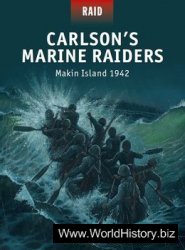The drama at Gold, Juno, and Sword ht2jz\es began around 05:00, when the British five-man midget submarines X-20 and X-23 surfaced, after remaining submerged for three days, and flashed green lights seaward to mark the parameters of Adm. Vians Eastern Task Force landing sites. Soon afterward, as the naval force approached its objective, German Adm. Krancke, Commander Naval Group West, dispatched against it from Le Havre three torpedo boats: T-28, Jaguar, and Mowe. The vessels loosed a spread of torpedoes at the Allied fleet, sinking the Norwegian destroyer Svenner, and escaped through a smoke screen.
The approach to Gold beach was to be no easy matter. There, the Germans had emplaced 2,500 obstacles, consisting of 900 tons of steel and concrete, on a coastal front of three miles (5km). It proved virtually impossible to clear lanes through these barriers until the tide went out. For much of the morning, Germans holed up in the village strongpoints directed a withering fire on to the beach, which added to the troubles of the assault units. Many landing craft, especially those transporting No. 47 Royal Marine Commando, were damaged or destroyed. As a result of this difficulty and strong German ground opposition, it took two days and 200 casualties before the commandos could seize their D-Day objective, Port-en-Bessin, which the Allies had hoped to develop as a logistics hub.
Critical assistance to Commodore Douglas-Pennants Gold assault forces came from the bombardment group, composed of British cruisers Ajax, Argonaut, Emerald, and Orion, Dutch gunboat Flores, and 13 destroyers. In fairly short order the Allied formation eliminated opposition from enemy coastal gun emplacements in the vicinity of Arromanches. The
Gold ships put a number of 6-inch rounds right through the embrasures the Longues position, destroying both guns there. By nightfall on June 6, Task Force G had successfully landed all three brigades of the British 50th Infantry Division.
At Juno beach to the east, naval forces experienced some difficulty getting the units of the 3rd Canadian Infantry Division to shore. Allied leaders had scheduled the landing on the right flank of Juno 20 minutes later than on the left flank. Staff planners figured that the landing craft would need higher water to traverse what aerial photographs suggested were underwater rocks, but which actually turned out to be floating seaweed. Another ten minutes was lost to difficulties during the passage of Task Force J from England. When the units approached the beach, they discovered that the water was too high for demolition personnel to clear lanes through the beach obstacles. Consequently, landing craft had to disembark their troops among the obstacles or smash through them. Vessels transporting No. 48 Royal Marine Commando had an especially tough time breaching the obstacles and a number of the wooden-hulled vessels were sunk or badly damaged.
Meanwhile, cruisers, destroyers, and rocket ships off Juno pumped hundreds of rounds into German gun positions, redoubts, communication trenches, and other defenses.
Like his decisive American colleagues on the other beaches, the British commander of the landing craft carrying the first-wave DD tanks at Juno ordered his landing craft commanders to deposit the armored vehicles safely on the beach.
By that evening. Task Force J had successfiilly landed the Canadians and preparations were being made to deploy ashore the follow-on formation, the British 7th Armoured Division and the British 51st (Highland) Division.
Like the eastern flank DDs at Omaha, the DDs at Sword had a tough time navigating the rolling seas. Forty DD amphibian tanks and a number of mine clearance tanks were launched 5,000 yards (4,500m) offshore and eight of them promptly went down. Following the DDs came the infantry landing craft, whose crews skilfully traversed the extensive German beach obstacles. Leading the assault at Sword, the eastern-most landing beach, were two LCIs loaded with 176 French marines of No. 4 Commando. The first troops of the British 3rd Infantry Division hit the beach just after H-Hour. An entire brigade was established ashore only 18 minutes later than scheduled. However, German opposition steadily mounted on the beach and succeeding landing craft found the going rougher. German guns and mortars zeroed in on landing craft and mined beach obstacles sank or damaged many others. Some vessels got stuck in the sand as the tide ebbed.
Assisting the landing craft flotilla and the troops ashore were two British batdeships, Warspite, a veteran of the Battle of Jutland in World War I, and Ramillies, together with British monitor Roberts. These ships neutralized the heavily casemated German guns enfilading the landing site from the east. In addition, five cruisers knocked out enemy guns positioned directly behind the beach. Guns encased in concrete were especially difficult to disable, but the bombardment force scored a
Direct hit on one of two such protected weapons in the Houlgate battery. Because of this naval gunfire support and hard fighting by the infantry brigade ashore. Rear Adm. Talbot’s Task Force S was able to land the division’s other two brigades in the afternoon. Marring the day’s otherwise exemplary performance, anti-aircraft gunners afloat and ashore mistook Allied aircraft overhead as German and shot down several fighters and transport planes.
In addition to troops, on D-Day the Eastern Task Force put on the beach 900 tanks and other armored vehicles, 240 field guns, 280 anti-tank guns, 80 light anti-aircraft guns, 4,500 vehicles, and 4,300 tons of ammunition and supplies.
When he surveyed the scene from his flagship Scylla, ofF Juno that evening, Adm. Vian could be pleased that all had gone reasonably well.
A little less than 17 hours after the first American infantryman debouched from an assault vessel onto Utah beach, the combined navies of the Allied Expeditionary Force had landed close to 133,000 soldiers in Normandy.




 World History
World History









